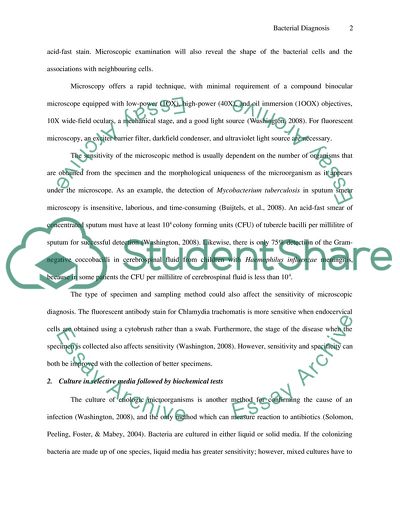Cite this document
(Theory and Practicalities of Bacterial Diagnostic Methods Report Example | Topics and Well Written Essays - 1750 words, n.d.)
Theory and Practicalities of Bacterial Diagnostic Methods Report Example | Topics and Well Written Essays - 1750 words. https://studentshare.org/health-sciences-medicine/1720365-a-critique-of-the-theory-and-practicalities-of-bacterial-diagnostic-methods
Theory and Practicalities of Bacterial Diagnostic Methods Report Example | Topics and Well Written Essays - 1750 words. https://studentshare.org/health-sciences-medicine/1720365-a-critique-of-the-theory-and-practicalities-of-bacterial-diagnostic-methods
(Theory and Practicalities of Bacterial Diagnostic Methods Report Example | Topics and Well Written Essays - 1750 Words)
Theory and Practicalities of Bacterial Diagnostic Methods Report Example | Topics and Well Written Essays - 1750 Words. https://studentshare.org/health-sciences-medicine/1720365-a-critique-of-the-theory-and-practicalities-of-bacterial-diagnostic-methods.
Theory and Practicalities of Bacterial Diagnostic Methods Report Example | Topics and Well Written Essays - 1750 Words. https://studentshare.org/health-sciences-medicine/1720365-a-critique-of-the-theory-and-practicalities-of-bacterial-diagnostic-methods.
“Theory and Practicalities of Bacterial Diagnostic Methods Report Example | Topics and Well Written Essays - 1750 Words”. https://studentshare.org/health-sciences-medicine/1720365-a-critique-of-the-theory-and-practicalities-of-bacterial-diagnostic-methods.


